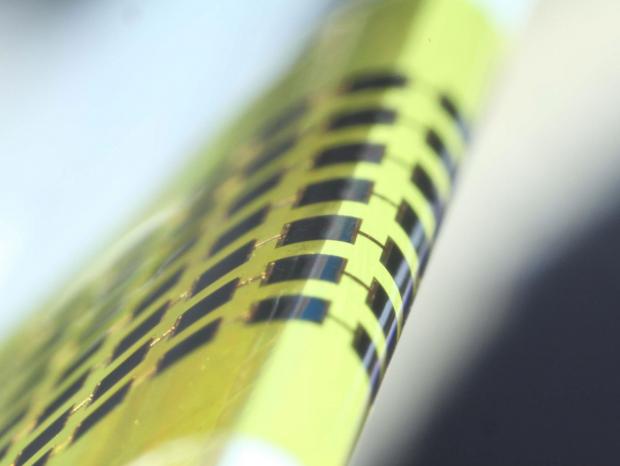
Solar panels that are so flexible they can wrap around the frame of a pair of glasses have created a breakthrough for wearable electronics. Developed by a team of researchers in South Korea, the panels are only a single micrometer thick, thinner than the average human hair, which is about 100 µm thick. They are also monumentally thinner than standard solar panels, and three to four times thinner than most of the slimmest solar cells available.
Tests showed that the panel material was flexible enough to wrap around a pencil and would still work when wrapped around something as tiny as 1.4 µm wide, according to test reports in Applied Physics Letters . The tests also showed that the cells undergo only a quarter of the amount of strain that other thin solar cells (about 3.5 µm) are known to experience. “The thinner cells are less fragile under bending, but perform similarly or even slightly better,” said Jongho Lee, engineer and professor at the Gwangju Institute of Science and Technology.
This thinness means that the lightweight solar cells could be placed on personal electronic devices and powered exclusively by light. The panels’ flexibility also greatly benefits wearable applications, providing a broader sense of possibilities that products could undergo in terms of design.
The panels consist of semiconductor material gallium arsenide. Researchers stamped solar cells onto a flexible substrate and cold-welded them to the electrode on the substrate. These designs mirror other solar panels that have been 1 µm thick, but those panels applied an etching technique. Previous designs were also noticeably unstable, as seen with MIT photovoltaics that were so light that they were practically unusable. This newer structure is believed to enable the making of flexible photovoltaic cells with fewer materials.
While not ready for commercial use yet, the thin solar panels only add to the exciting developments in this field. Recently, researchers at Australia’s University of New South Wales (UNSW) set a new world record for solar efficiency by building photovoltaic cells that can harvest 34.5% of the sun’s energy without concentrators. “Extracting more energy from every beam of sunlight is critical to reducing the cost of electricity generated by solar cells as it lowers the investment needed, and delivering payback faster,” said researcher Mark Keevers.
Further developments within this technology could ultimately help to decrease a reliance on fossil fuels.
Source: The Independent, Science Alert
Advertisement
Learn more about Electronic Products Magazine





